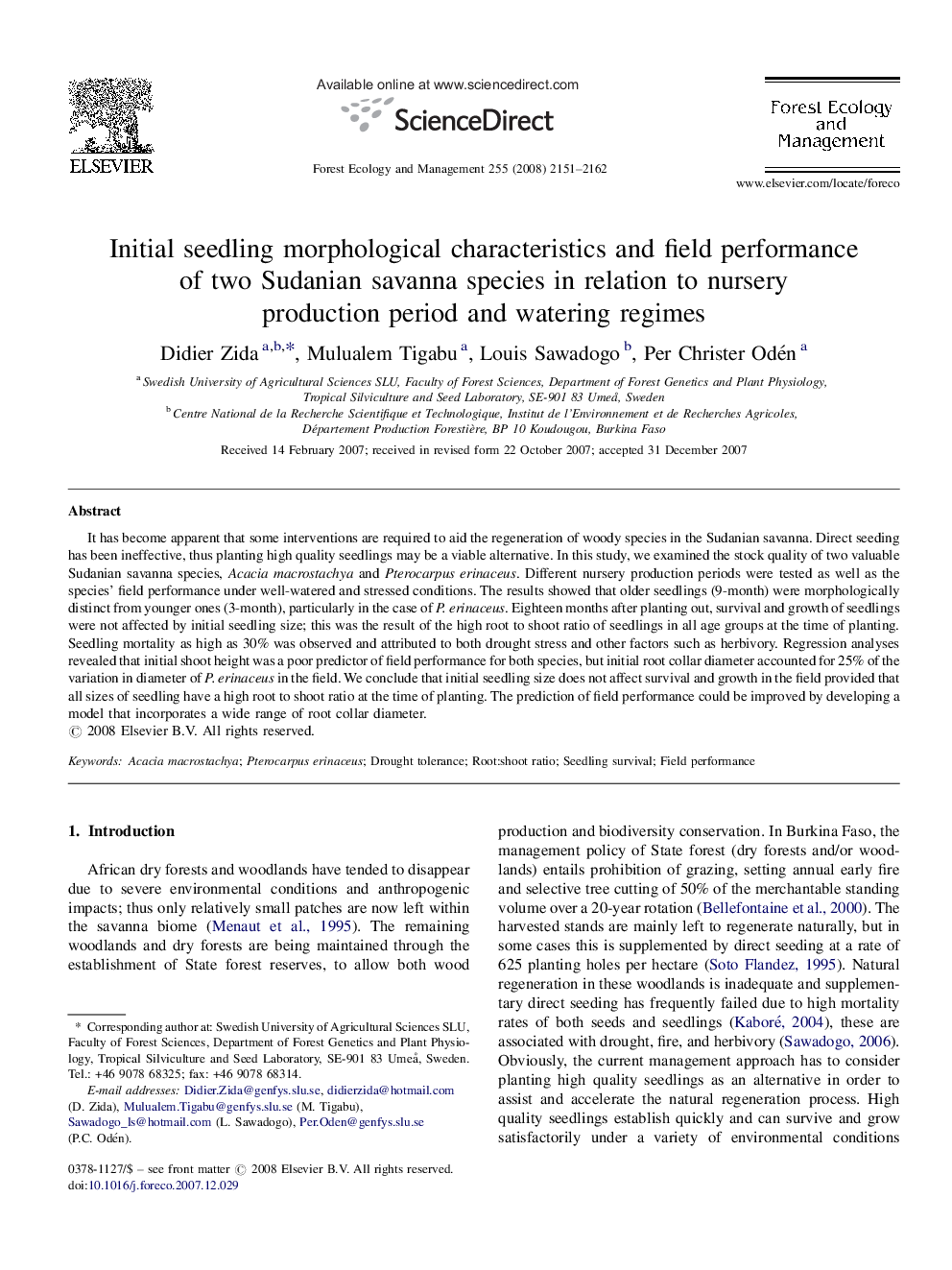| Article ID | Journal | Published Year | Pages | File Type |
|---|---|---|---|---|
| 89354 | Forest Ecology and Management | 2008 | 12 Pages |
It has become apparent that some interventions are required to aid the regeneration of woody species in the Sudanian savanna. Direct seeding has been ineffective, thus planting high quality seedlings may be a viable alternative. In this study, we examined the stock quality of two valuable Sudanian savanna species, Acacia macrostachya and Pterocarpus erinaceus. Different nursery production periods were tested as well as the species’ field performance under well-watered and stressed conditions. The results showed that older seedlings (9-month) were morphologically distinct from younger ones (3-month), particularly in the case of P. erinaceus. Eighteen months after planting out, survival and growth of seedlings were not affected by initial seedling size; this was the result of the high root to shoot ratio of seedlings in all age groups at the time of planting. Seedling mortality as high as 30% was observed and attributed to both drought stress and other factors such as herbivory. Regression analyses revealed that initial shoot height was a poor predictor of field performance for both species, but initial root collar diameter accounted for 25% of the variation in diameter of P. erinaceus in the field. We conclude that initial seedling size does not affect survival and growth in the field provided that all sizes of seedling have a high root to shoot ratio at the time of planting. The prediction of field performance could be improved by developing a model that incorporates a wide range of root collar diameter.
